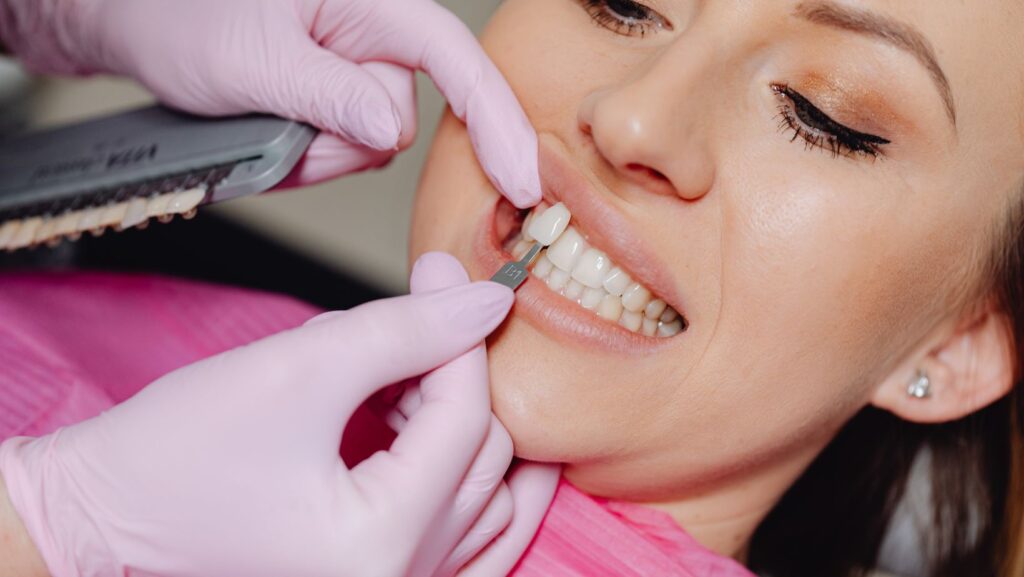
If you’ve ever visited a dentist in Anna, Texas, you’ve probably heard the terms surgical and non-surgical dental procedures. While both aim to improve your oral health, they differ in how they’re performed, how invasive they are, and what kind of recovery you can expect. Understanding the difference can help you make more confident choices about your dental care and know when to visit a cosmetic dentist in Anna, Texas or your general dentist.
What Are Non-Surgical Dental Procedures?
Non-surgical dental procedures are treatments that do not require cutting into the gums or bone. They are usually less invasive, cause minimal discomfort, and have little to no downtime. Most patients can return to their regular routine the same day.
Common examples include:
- Teeth cleanings and exams: Routine checkups remove plaque and tartar while helping detect early signs of dental issues.
- Fillings: Used to treat cavities and restore the tooth’s structure.
- Teeth whitening: A popular cosmetic dentistry service offered by clinics like Anna Dental Clinic to brighten smiles safely and effectively.
- Bonding and veneers: Used to fix minor chips, cracks, or discoloration without surgery.
- Fluoride treatments or sealants: Preventive options that protect enamel and stop decay.
- Orthodontic treatments: Clear aligners or braces straighten teeth without invasive methods.
Non-surgical treatments focus on maintenance, prevention, and improving appearance or function with minimal discomfort.
Benefits of Non-Surgical Procedures
There’s a reason why most patients prefer non-surgical options whenever possible:
- Less pain and faster recovery: These treatments are typically done under local anesthesia or require no anesthesia at all.
- Lower risk: Since they don’t involve incisions, there’s a smaller chance of infection or complications.
- Cost-effective: Non-surgical dental work is usually more affordable than surgical alternatives.
- Convenience: Many treatments, especially cosmetic ones, can be completed in a single visit to your Anna Dental Clinic.
If your main goal is to enhance your smile or maintain your oral health, non-surgical options are usually the first step.

What Are Surgical Dental Procedures?
Surgical dental procedures involve cutting or altering gum tissue, bone, or tooth structure. These are often performed by oral surgeons or highly trained cosmetic dentists with specialized equipment.
Examples of surgical treatments include:
- Tooth extractions: Removing severely damaged or impacted teeth, such as wisdom teeth.
- Dental implants: A common procedure in cosmetic dentistry used to replace missing teeth with artificial roots and crowns.
- Gum surgery: Treating advanced gum disease or reshaping the gumline for aesthetic reasons.
- Root canal surgery (apicoectomy): Used when standard root canal therapy isn’t enough to remove an infection.
- Bone grafts or sinus lifts: Performed before dental implants to restore bone density.
Surgical dental work is often necessary when damage or disease cannot be corrected through non-invasive means.
Benefits of Surgical Dental Procedures
While surgery may sound intimidating, these treatments often provide long-term solutions that non-surgical options can’t achieve.
Some key benefits include:
- Permanent results: Procedures like dental implants offer lasting tooth replacement and stability.
- Comprehensive care: Surgery can address severe oral health issues such as bone loss, deep infection, or advanced decay.
- Improved function: Restoring teeth, gums, and bone structure can help with chewing, speech, and overall comfort.
- Enhanced appearance: Many surgical procedures, especially in cosmetic dentistry, can completely transform a smile.
When to Choose Non-Surgical vs. Surgical Options
Your dentist in Anna, Texas will help determine which type of treatment is best for you based on your needs, dental history, and goals.
You may need non-surgical procedures if:
- You have minor cavities, stains, or alignment issues.
- You want to improve your smile with whitening, bonding, or veneers.
- You’re maintaining healthy teeth and gums through preventive care.
You may require surgical dental care if:
- You have missing teeth that need implants.
- Your gums are severely infected or receding.
- A tooth is too damaged to save with a filling or crown.
- You need corrective procedures for jaw or bone issues.
At Anna Dental Clinic, dentists often start with non-surgical solutions whenever possible, moving to surgical treatments only when necessary. This ensures patients get the right balance between comfort, effectiveness, and long-term health.
The Role of Cosmetic Dentistry in Both Types
Cosmetic dentistry bridges the gap between functional and aesthetic care. Whether you’re getting a simple teeth whitening session or a full smile makeover with implants, the goal is to restore confidence and beauty along with health.
Many cosmetic dentists in Anna, Texas combine both surgical and non-surgical techniques. For example, dental veneers are a non-surgical procedure that can dramatically improve appearance, while implants are surgical but designed with cosmetic precision.
Final Thoughts
Both non-surgical and surgical dental procedures have their place in modern dentistry. Non-surgical treatments are ideal for prevention, maintenance, and minor enhancements, while surgical options address more complex or long-term needs.
If you’re unsure which one is right for you, visiting an experienced cosmetic dentist in Anna, Texas, such as the team at Anna Dental Clinic, is a great first step. They can assess your oral health, explain all available options, and design a treatment plan that fits your comfort, goals, and budget.
A healthy smile starts with understanding your choices—and in Anna, Texas, you have expert care right around the corner.
